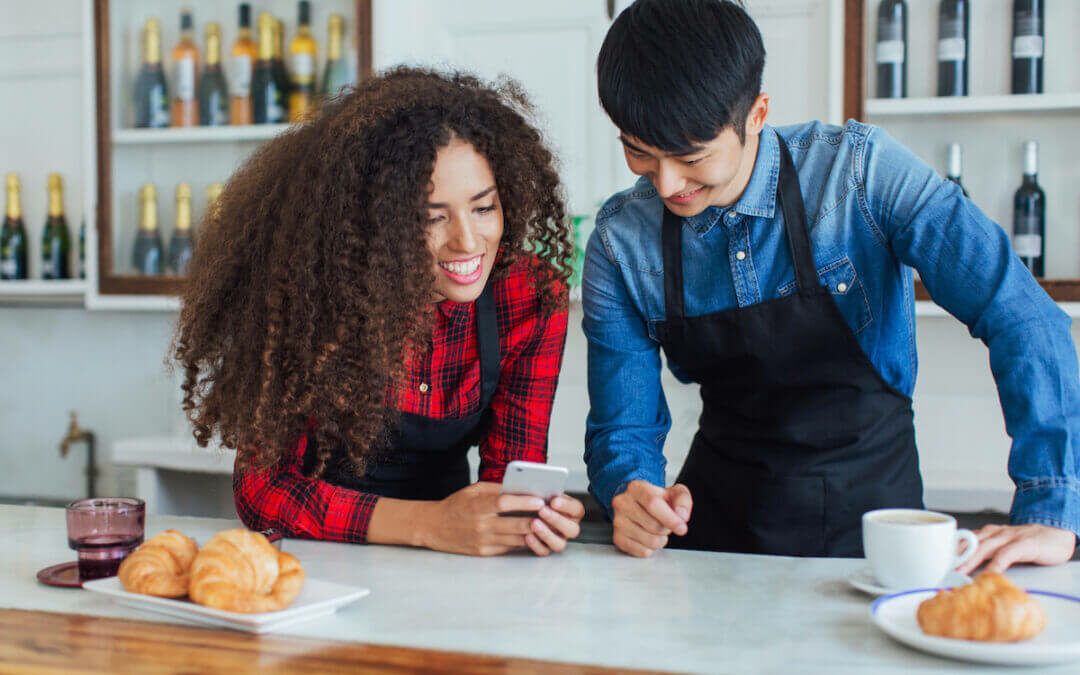
How to drive brand advocacy in frontline workers (hint: the answer isn’t hiring bonuses!)
In case you missed it, last week we shared Nudge COO Jordan Ekers’ three-step plan for driving discretionary effort in frontline workers:
“Frontline organizations, particularly in retail, hospitality, and foodservice, are in rebuild mode. They’re up against a perfect storm, with supply chain delays and shortages, changing consumer behavior, and many other challenges. And while finding and retaining staff is part of the solution, a much bigger effort should be placed on empowering existing staff to go the extra mile. Because if you have your staff on board, collectively working to drive your core mission, increase revenue, and constantly deliver next-level customer and guest experience… you’re going to jump leaps and bounds in front of the competition. And that’s the magic of discretionary effort.”
And step one in this process? Culturally inspiring your workforce. “How do you inspire them to fall in love with the brand that they choose to work for, so that they care about their job, the brand, and the customer experience,” Ekers wrote. “How, in other words, do you transform an entire workforce into brand advocates?”
So that’s what we’ll talk about today: how to transform your workforce into brand advocates.
Of course, it’s not easy. Culturally inspiring at scale has its challenges, especially when a workforce numbers in the thousands – or tens of thousands – dispersed across the globe. And, let’s face it: we’re in challenging times. Allocating time, energy, and budget toward driving brand advocacy among frontline workers is often an uphill battle.
Speaking of budget, here’s one pitfall you can avoid: hiring bonuses. You’ve likely seen posters and billboards all over; brands like Papa John’s and Disney World are offering cash (from $50 to over $6,000 for more specialty positions) for new hires that meet specific criteria, like staying on for a certain amount of time.
Are hiring bonuses getting the attention of frontline candidates? Yes. Are they going to magically transform your staff into the brand advocates you need for long-term success? Likely not.
In a (dated, but still relevant) article for Harvard Business Review, author and lecturer Alfie Kohn cited a series of studies run by Northwestern University that attempted to test the “bonus effect” and whether or not it actually works.
“What they found was both straightforward and remarkably consistent,” wrote Kohn. “When people are promised a monetary reward for doing a task well, the primary outcome is that they get more excited about money. This happens even when they don’t meet the standard for getting paid.”
In other words, it doesn’t get at the core driver of brand advocacy: cultural inspiration.
Because culturally inspiring your staff doesn’t come from compensation – at least, not compensation alone. It comes from answering one simple question: “Why.” Why should your employees care about their job? Why should they want your organization to succeed? Why should they care? The answer to that question might be, in part, a competitive employee compensation and benefits – but there’s so much more to it.
Here are 3 ways to culturally inspire your workforce to drive brand advocacy:
1. Support your staff’s mental health
Food service and retail have always been stressful jobs, but now it’s even more so. With the COVID-19 pandemic and the additional burden employees face because of staffing challenges, they are under more pressure than ever. A recent interview with food expert Sylvain Charlebois goes deeper into into the challenges facing foodservice workers:
“They have been showing up to work every day generally unsure as to the safety and security of their jobs as well as the health of the businesses they’re working for. In addition, many of their jobs and the way they used to do things changed overnight. The ways they interact with and serve the customer changed. Some establishments also introduced new services like curbside pickup which requires new skills, new equipment and new ways of doing things. As a result, many had to essentially retrain themselves, on the fly, in order to continue doing their job effectively. It’s all caused an incredible amount of stress and adds up to a big mental health issue that operators within the foodservice sector have got to address.”
In fact, the Foodservice Deskless Report found that burnout is one of the top three reasons employees in this industry want to quit. But prioritizing mental health is about so much more than retaining staff. As Josh Bersin puts it, employee mental health is no longer an HR KPI – it’s a business strategy: “Before you delegate the mental health issue to the benefits department, let me suggest something else. This is a responsibility of leadership (who also feel stressed out), so look at it as a strategy. If you, as a leadership team, can focus on mental health first, financial success will likely follow.”
2. Foster a sense of community
Frontline employees spend a huge chunk of their lives at work, so it makes sense that they would want to feel like they belong. In fact, 60% of deskless workers would like to have a stronger community with workers outside of their location. Being connected would improve both morale and retention significantly. Need proof? 38% of polled workers feel that a strong workplace community would make them more engaged and motivated. And according to Gallup, engaged employees are far more likely to stay. They found that business units in high-turnover organizations have 24% less turnover than non-engaged business units.
3. Review how information is flowing
If there was one major takeaway from last year’s Deskless Report, it’s that there’s a huge disconnect between workers and leaders on the effectiveness of internal communication. Frontline workers are desperate for more information about company updates, product information, you name it. And, unfortunately, insufficient or unclear information leads to uncertainty, which leads to stress – which isn’t going to foster brand advocates.
Ineffective communication is also a missed opportunity for sharing the “why” – for baking your brand mission and core values into everything you share. On the other hand, when you can connect a company update or task back to the core question of “why”… you’re well on your way to culturally inspiring your staff.
But for the “why” to resonate, your communication needs to be flowing effectively and consistently.
—
A hiring bonus may be flashy and draw lots of attention (and press!), but it alone won’t help drive discretionary effort by fostering brand advocates.
For that, you need to culturally inspire your staff by answering that one magic question, again and again: “why.”





